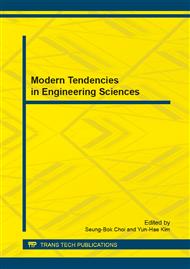p.495
p.499
p.503
p.510
p.516
p.521
p.528
p.536
p.547
An Approach for Sugar Equipment Optimal Model Based on Multiple Fields Synergy
Abstract:
In cane sugar production field, there are a few indexes should be highlighted, which are the product quality, refining efficiency, sugar boiling time and heat transfer performance. And those indexes are all related to the massecuite circulation flow. With the goal of better sugar production, this paper developed a model for optimal global coordination of all the sugar boiling facilities based on the multiple coupling synergies of the sugar boiling system. With a synergy solver developed by knowledge base and data base, the model solution was yielded. Emulation and experimental results showed that the higher synergy of all multiple fields, the better was the massecuite circulation flow. In other words, the optimal solution this paper yielded could result the higher production of sugar and more identical size of the sugar crystals.
Info:
Periodical:
Pages:
516-520
Citation:
Online since:
February 2014
Authors:
Price:
Сopyright:
© 2014 Trans Tech Publications Ltd. All Rights Reserved
Share:
Citation:


